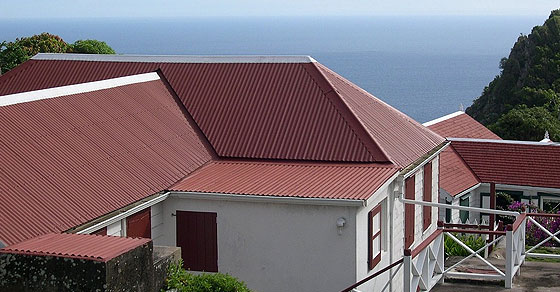A roof can sustain significant damage from thunderstorms. This is especially true if a storm hits while a roof is already in bad shape. And when it comes to roofs, even small damage might set off a disastrous series of events. This justifies the significance of post-storm inspections. Don’t, however, climb to your roof. Only a qualified roofer with the necessary training, skills, and equipment can walk on a roof safely. Nevertheless, you can still inspect your roof from below. Consider the following best ways to safely inspect your roof after a storm:
Use a Pair of Binoculars
Although it is not advised to climb onto your roof, utilising binoculars is the next best thing you can do. You can view a good portion of your roof from the ground with binoculars. And your binoculars will let you get a close-up look even if you have to find a viewing point across the street from your home.
Check the Condition of Your Flashing
Strong storms can harm a roof’s flashing. Typically, flashing is made of metal, like aluminium. These extensive metal strips serve as a seal between your roof’s various components, including the chimney, valleys, and vents. Water will flow into the exposed area and enter your home if the flashing buckles. Around chimneys, vents, valleys, and skylights look out for flashing that has been bent, buckled, or disconnected. Make plans for repairs as soon as possible if you notice any damage.
Inspect Your Gutters
Especially if you have trees, your gutters will probably have debris in them after a storm. Gutters can become clogged by leaves, twigs, and branches, which is a concern during periods of intense rainfall. Rainwater overflows onto your roof and siding when an obstruction prevents it from draining to the downspout. Rainwater puddles can cause a roof to collapse. Hire a professional to clean and repair your gutters if you can’t securely access them.
Check for Debris
Storms bring loose debris, such as leaves and tree branches. If you find debris on your roof, there may be damage hidden behind it. Additionally, organic debris such as tree branches draws insects, dampness, and mould. Your roof will progressively become damaged by all of these things. If you can’t reach the debris from a ladder, don’t attempt to remove it off your roof. You might, at most, damage your roof and, at worst, hurt yourself. A roofing expert may clear the debris from the area for you and inspect the region to ensure the fallen debris doesn’t harm your roof.
Check the Roof Cavity for Signs of Damage
Examine the roof cavity with a torch to look for damage. Damage is evident by sunlight penetrating the roof, dark spots, and sagging. All of these signs point to the urgent need for roof repair. The likelihood that the damage will worsen and that the roof repair will turn into a partial or complete restoration increases the longer you put off repairs.
Are you looking for someone to inspect and do some repairs for your damaged roofs caused by a storm? Then you need the help of an experienced roof repair professional from Johnson Roofing. To schedule a roof inspection and repair, contact us right now. We offer quality roofing services for residential and commercial clients. Our team are friendly, and we are available for a no-obligation quote at your convenience, Auckland-wide.

